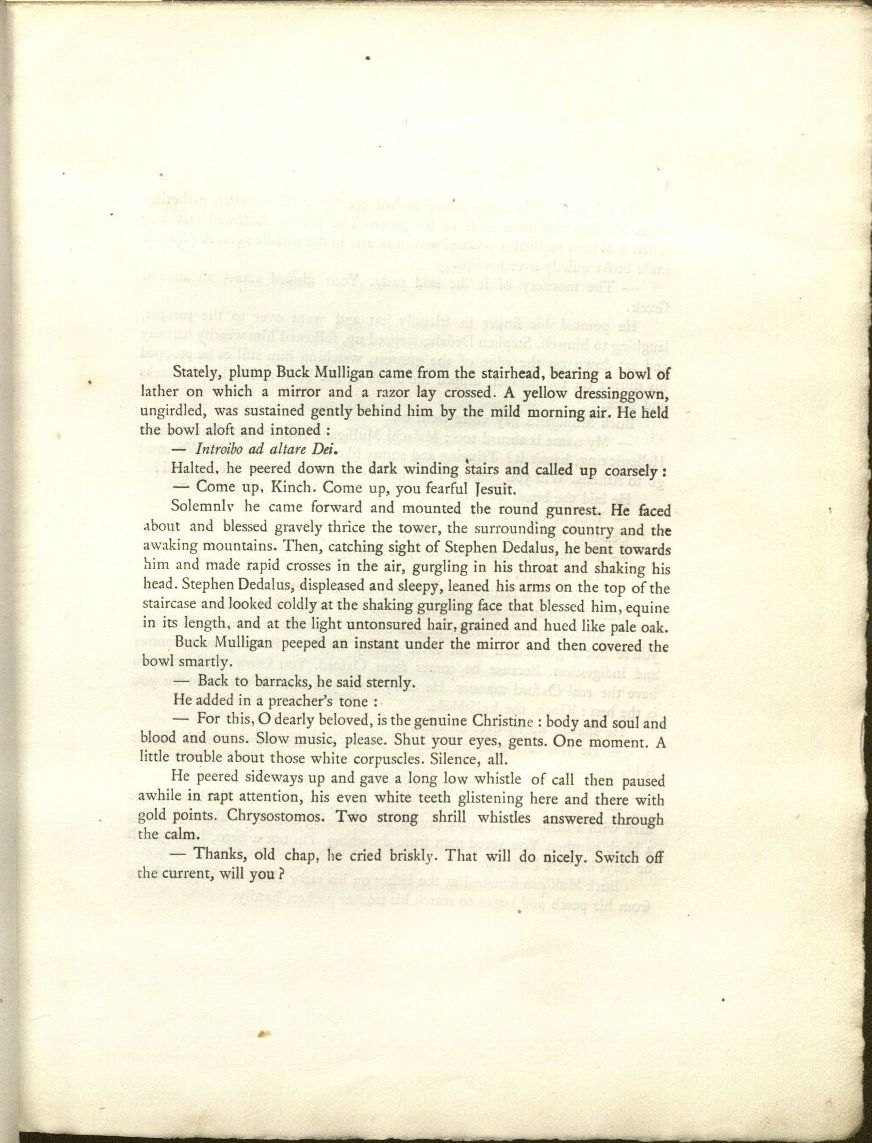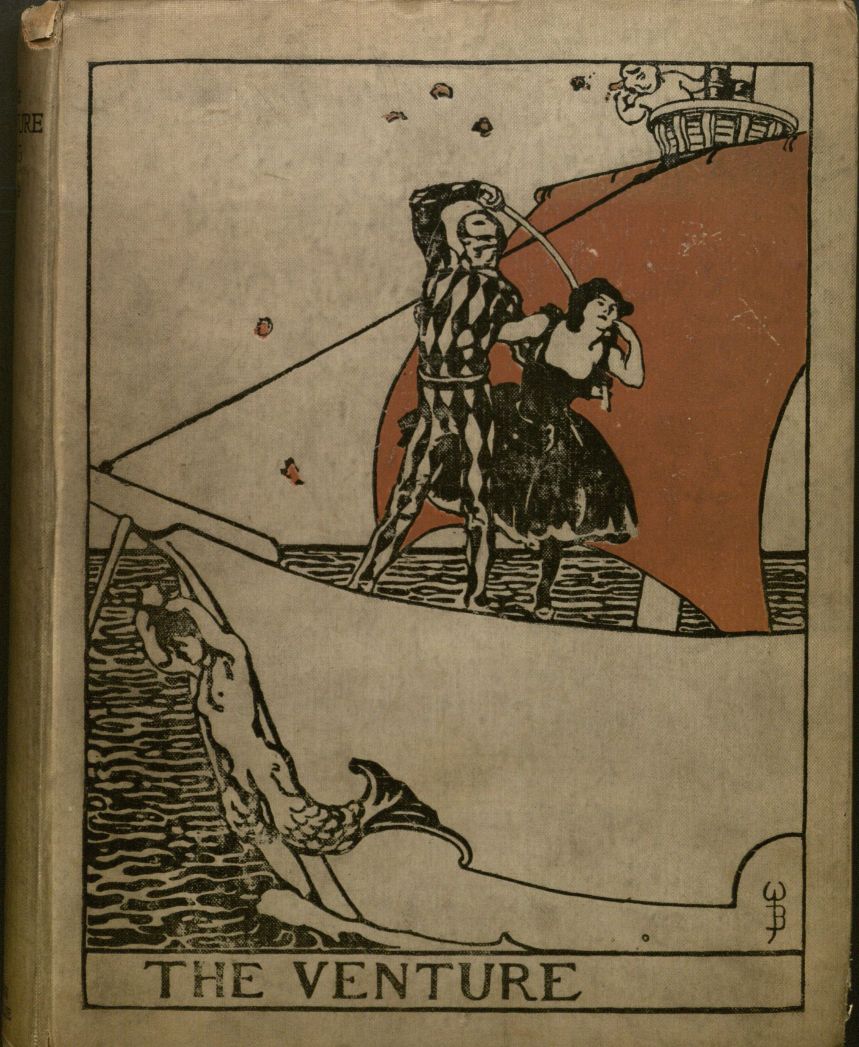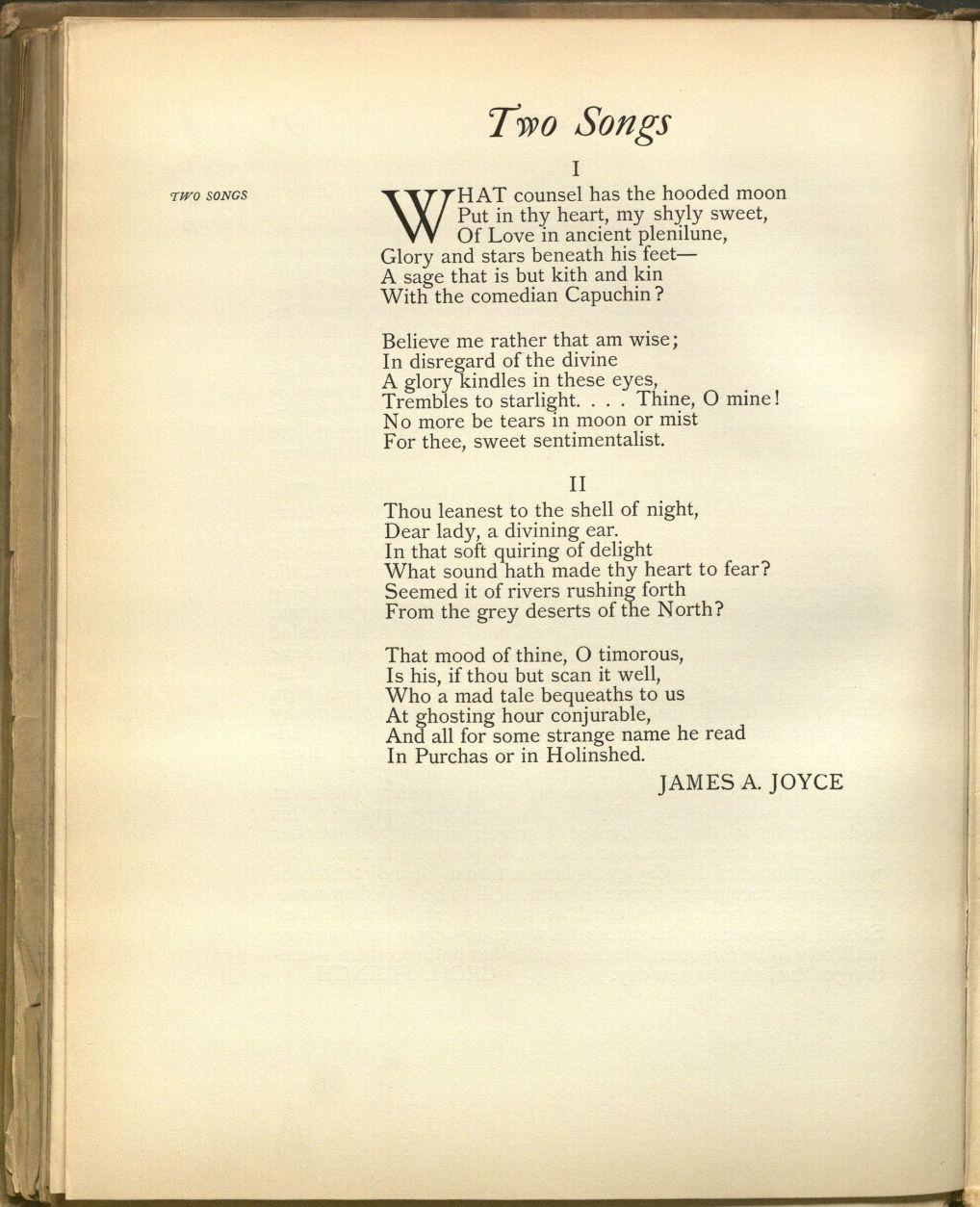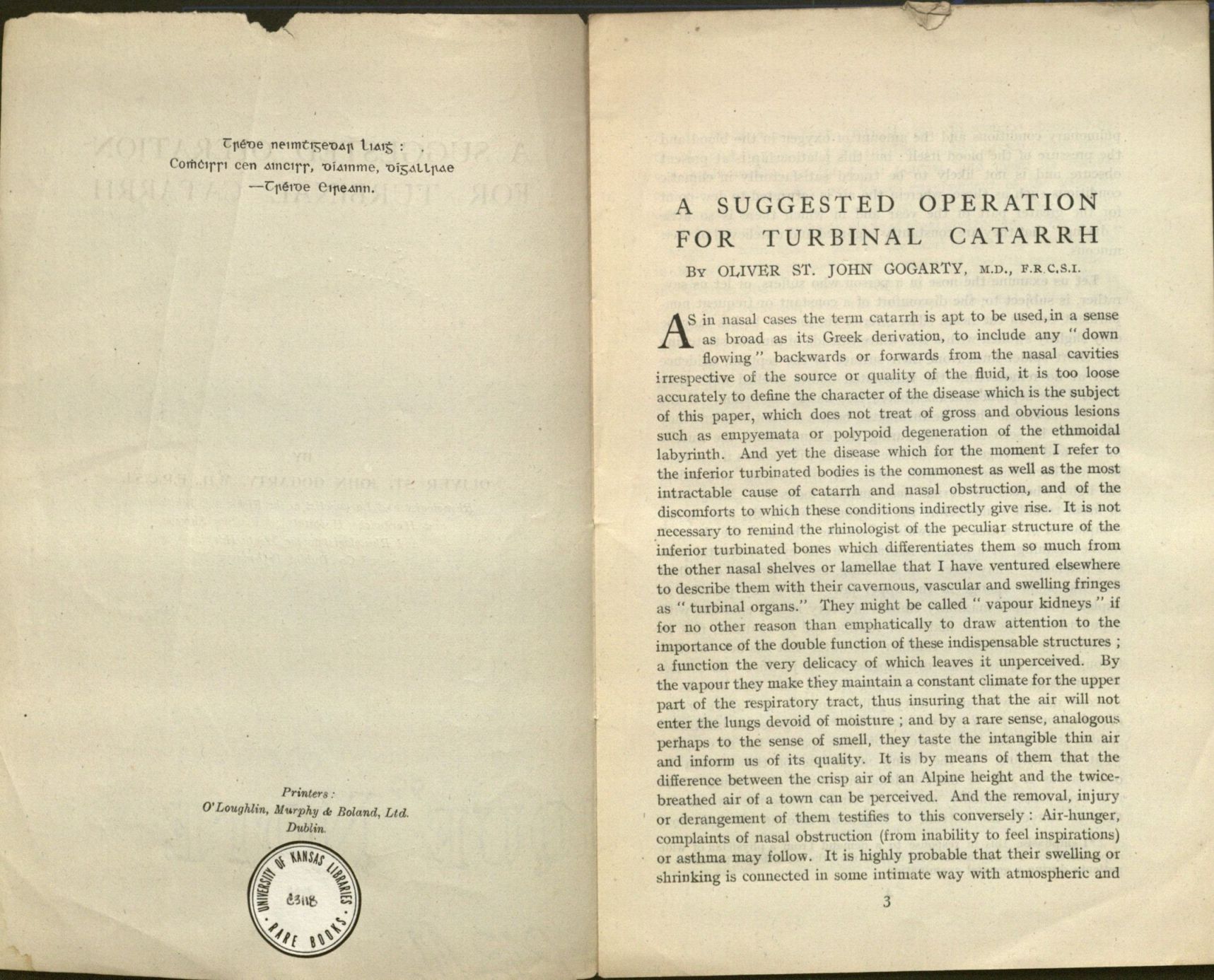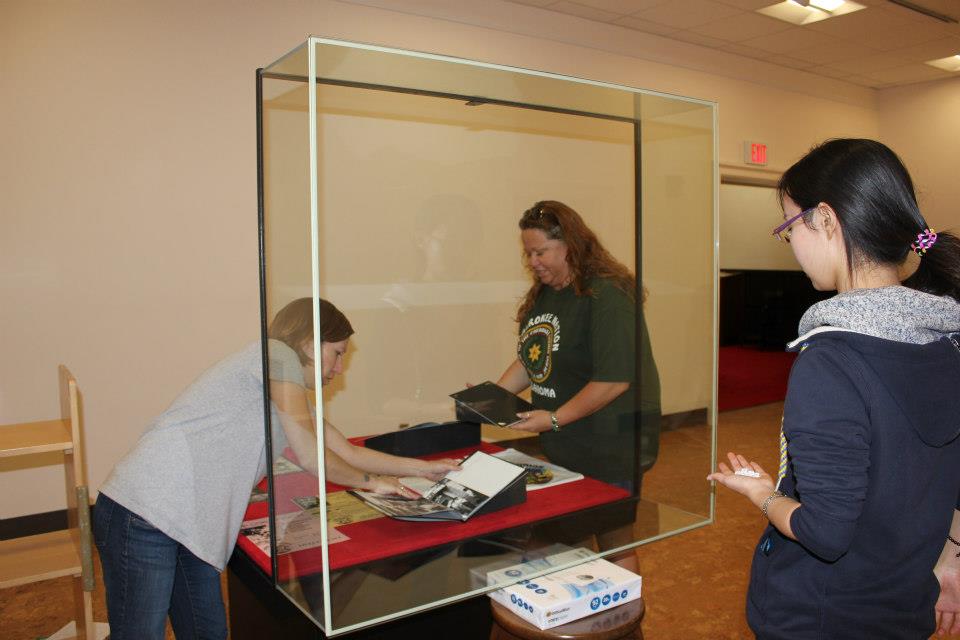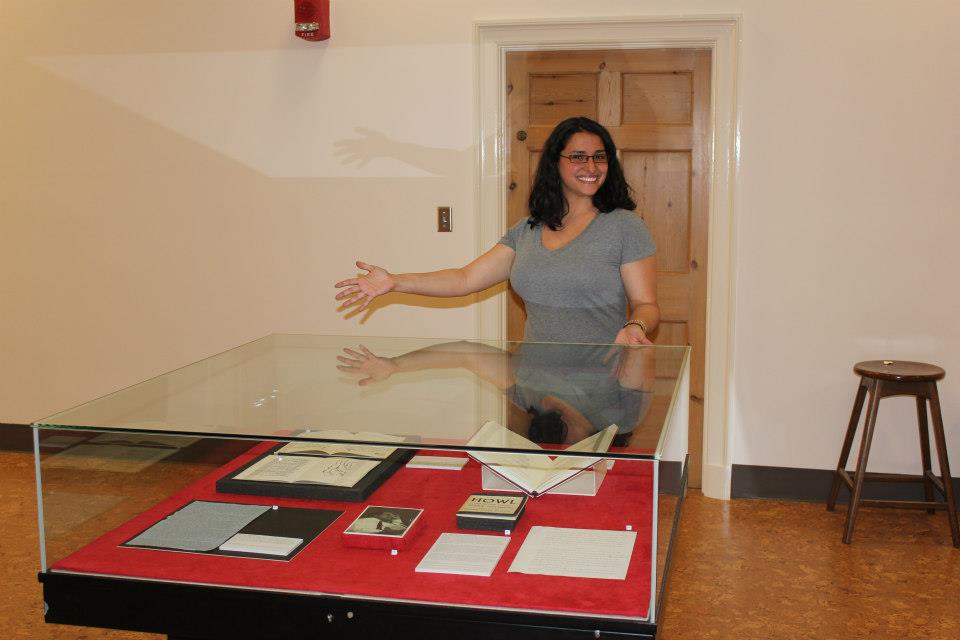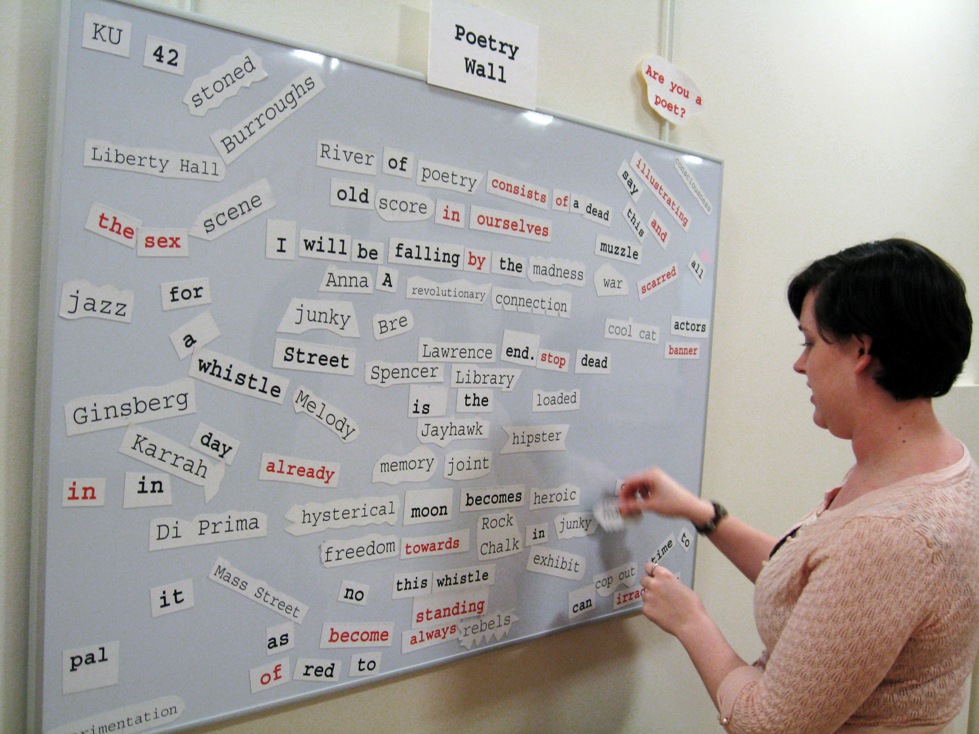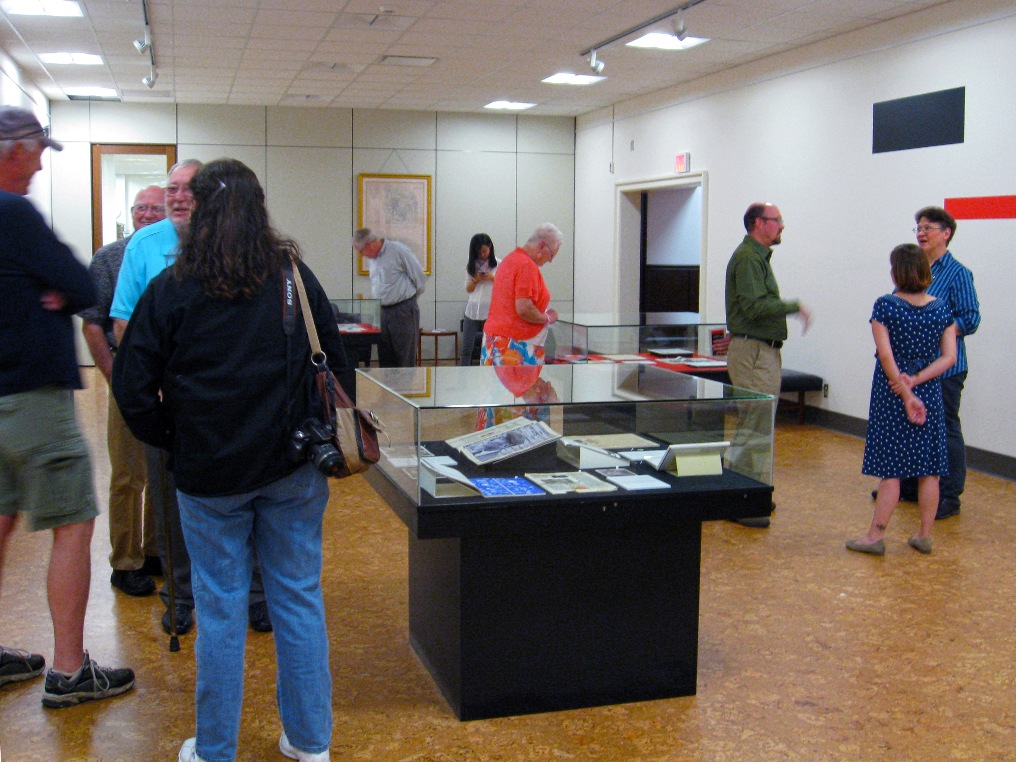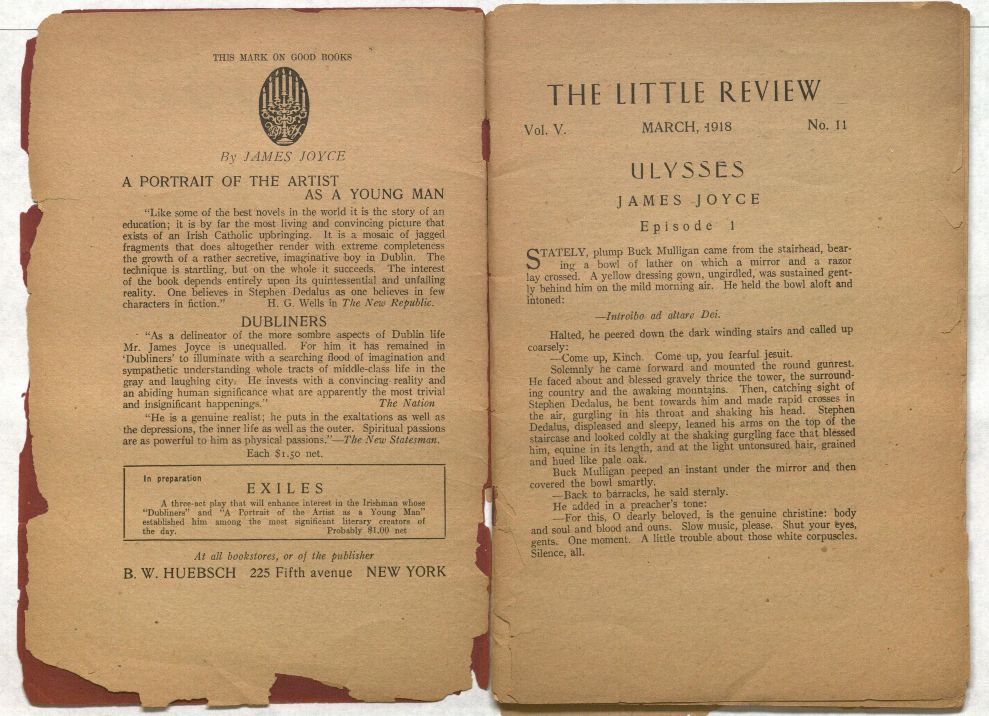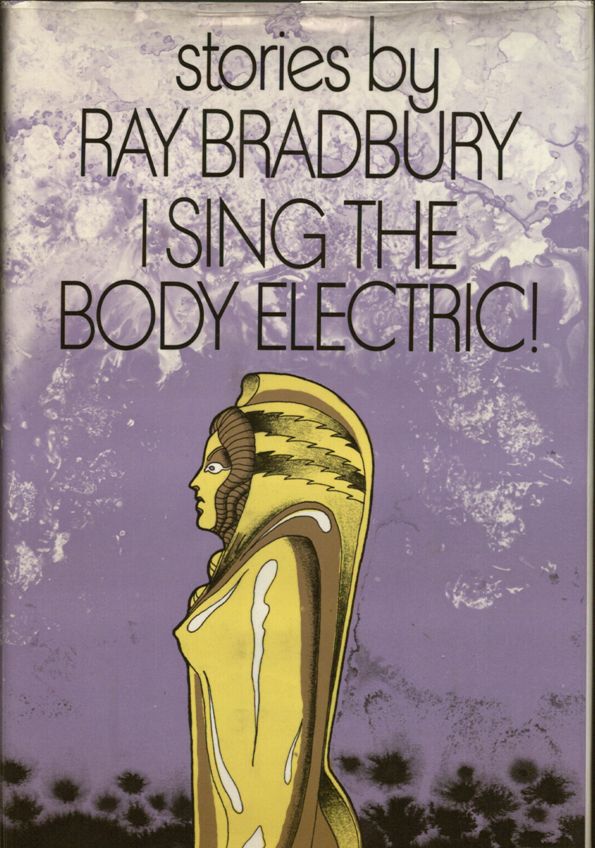Bloomsday 2013: Buck Mulligan / Oliver Gogarty Edition
June 16th, 2013Each June 16th, fans of James Joyce’s Ulysses celebrate “Bloomsday” in commemoration of the day on which the novel is set. The annual fête (often marked by marathon readings) takes its name from the modernist classic’s central character, Leopold Bloom.
Though the novel belongs primarily to Bloom, Stephen Dedalus, or (in the last episode) Molly Bloom, it is another character who graces its famous first sentence: “Stately, plump Buck Mulligan came from the stairhead, bearing a bowl of lather on which a mirror and a razor lay crossed.”
First page of the first episode of Ulysses by James Joyce. Paris: Shakespeare and Company, 1922.
Call Number: Joyce Y116. Click image to enlarge.
Buck Mulligan, the flippant friend of Stephen Dedalus, was in part modeled after a friend from Joyce’s younger days, Oliver St. John Gogarty. According to Joyce’s biographer, Richard Ellmann, the two young men met at the National Library of Ireland when Joyce was approximately twenty. Both had medical aspirations and wrote poetry, though only Gogarty would go on to become a doctor. While Gogarty admired Joyce’s writing, Joyce was less enthusiastic about his new friend’s, which he felt lacked weight and depth. Joyce did, however, appreciate the satire and bawdiness of Gogarty’s more humorous poems, and he incorporated this into Mulligan’s verse in Ulysses.
Perhaps somewhat to his chagrin, Joyce found himself in Gogarty’s company in his first book appearance. Both men had poems titled “Two Songs” published in the annual anthology The Venture (1905). By this time, Joyce and Gogarty had already fallen out. Ellmann notes that from the outset the friendship between the two would-be writers was also a rivalry. The character of Buck Mulligan in Ulysses is entertaining in his wit and pleasure-seeking, but he is also depicted as insensitive and disloyal.
Which young writer’s poems are more to your taste?: “Two Songs” by James Joyce and “Two Songs” by Oliver
St. John Gogarty from The Venture; An Annual of Art and Literature. London: John Baillie, 1905, p. 92, p. 138.
Call Number: Joyce Y243. Click images to enlarge and read poems.
Readers curious to investigate Gogarty through his own words will find plenty to peruse in Spencer’s collections. Gogarty published verse, plays, novels, and memoirs. His book, As I Was Going Down Sackville Street: A Phantasy in Fact (1937), offers depictions of writers he knew, including Joyce, Yeats, and George Moore, as well as the politicians with whom he associated, such as Arthur Griffith and Michael Collins (Gogarty performed the autopsies on both of these men and subsequently served as a Free State senator).
For those eager to delve into Gogarty’s more obscure writings, Spencer Research Library holds a copy of his play Blight the Tragedy of Dublin: An Exposition in 3 Acts (1917), published under the pseudonym “Alpha and Omega.” Even scarcer is Gogarty’s eight-page pamphlet, “A Suggested Operation for Turbinal Catarrh” (1921), which provides insight into his work as a doctor.
“A Suggested Operation for Turbinal Catarrh” by Oliver St. John Gogarty. Dublin: pr. for the author, 1921.
Call Number: C3118. Click image to enlarge.
Since this medical pamphlet is indeed rare (the only other copy recorded in WorldCat is housed at the National Library of Ireland) we’ve scanned it and posted it in its entirety here. So this is what “Buck Mulligan” was up to when he wasn’t composing ribald rhymes!
Signature of Oliver St. John Gogarty, taken from a letter to P. S. O’Hegarty,
17 September, 1924. Call Number: MS P415:1a.
Searching for more Bloomsday fun? For a list of Ulysses “firsts,” check out last year’s Bloomsday post.
Elspeth Healey
Special Collections Librarian

